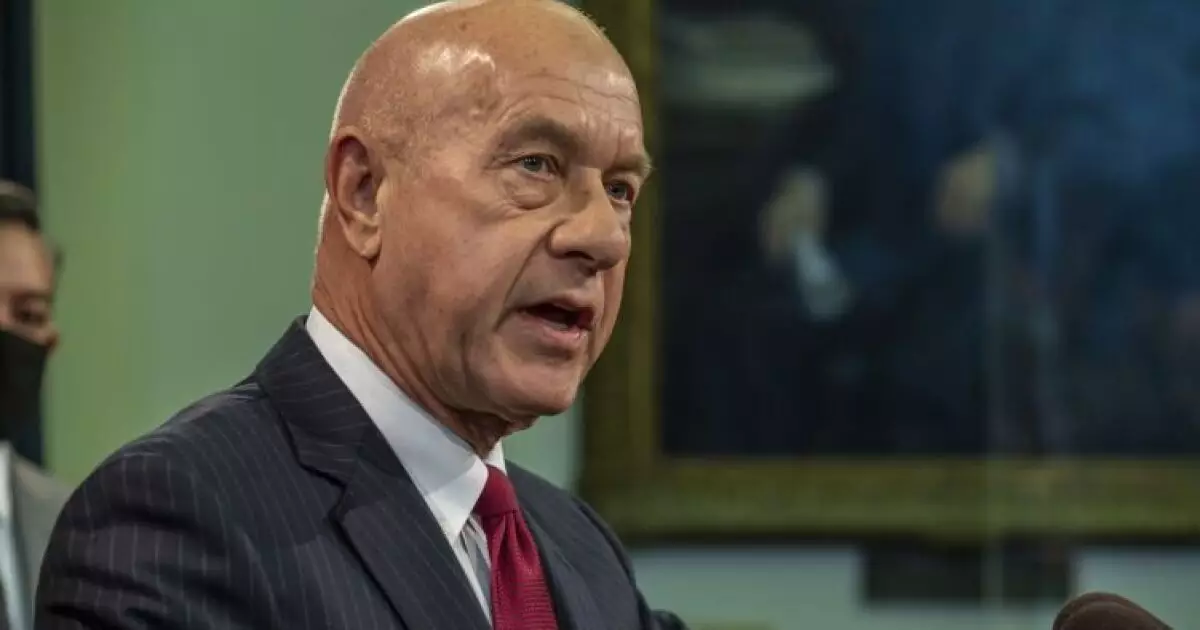Houston finds itself at a crossroads, wrestling with a financial dilemma that could shape its future. Mayor John Whitmire’s recent announcement to allocate at least $100 million annually towards addressing the city’s dire infrastructure needs is both a beacon of hope and a signal of impending urgency. This seismic shift comes on the heels of a lawsuit that has underscored the city’s inability to effectively manage its limited resources amidst an ever-increasing burden of aging infrastructure.
City officials once feared that the verdict from a litigation filed in 2019 could catastrophically spike Houston’s structural budget deficit to an alarming $320 million. While the mayor’s announcement aims to alleviate some immediate repercussions, it raises several crucial questions about the city’s long-term financial health and governance. The strategic decision to lock in a percentage of property tax revenue for drainage and road projects is commendable, yet it exposes deeper systemic flaws in budgeting that cannot be ignored.
A Band-Aid on a Bullet Wound
The planned increase in allocation from the current 57% to a full 100% by 2028 paints a picture of hope; however, one must consider whether this is truly a viable solution or just a temporary band-aid on a gaping wound. The incremental increases proposed evoke skepticism. Will the financial windfall actually translate into meaningful change, or will it merely placate public outcry while the fundamental issues of governance remain unaddressed? Houston’s financial stability is precariously dependent on the proposals of Mayor Whitmire, who, despite his intentions, may only be postponing the inevitable reckoning with rigid tax caps and insufficient funding strategies.
Furthermore, the reaction from the city council reveals an overarching enthusiasm that seems almost insulated from the reality of what’s at stake. While pushing for funds to fix dilapidated roads and drainage problems is important, it is equally critical to scrutinize the sustainability of those funding sources. As praised by Mayor Pro Tem Martha Castex-Tatum, the acknowledgment of the city’s aging infrastructure is not new; yet, the solutions have been alarmingly piecemeal, reflecting a troubling lack of foresight.
The Rating Agencies’ Warning Signs
The precarious situation is amplified by the fluctuating financial reports that have seen the city’s budget reserves dwindling from nearly $349 million at the end of the previous year to a staggering $228 million within just a couple of months. Such rapid deterioration in financial health raises red flags that resonate with credit rating agencies like Fitch Ratings and S&P Global. Their recent downgrade of Houston’s outlook from stable to negative serves as an ominous reminder that cosmetic fixes won’t suffice in a scenario requiring structural reform.
It is also intriguing to see potential financial relief coming from a newly proposed Texas bill that seeks to allocate 30% of excess revenue from the Harris County Toll Road Authority for public safety and emergency services. While this proposal could provide some much-needed leeway, skepticism lingers regarding whether these funds will adequately address the city’s deep-rooted financial woes.
A Call for Comprehensive Change
As we watch Houston grapple with its infrastructural collapse, it becomes increasingly clear that the city requires more than just superficial financial adjustments. Real change mandates a comprehensive overhaul of fiscal management and proactive infrastructure planning. The reliance on temporary measures, such as tax revenue allocation agreements, without a thorough re-evaluation of the budgeting process, could lead to a crisis far greater than the one we currently face.
This moment is more than a mere fix; it’s a call to arms for policymakers, citizens, and stakeholders to confront the pressing realities of urban governance. If Houston does not act swiftly and strategically, the $100 million may soon feel like an insufficient drop in a rapidly dwindling ocean.


Leave a Reply